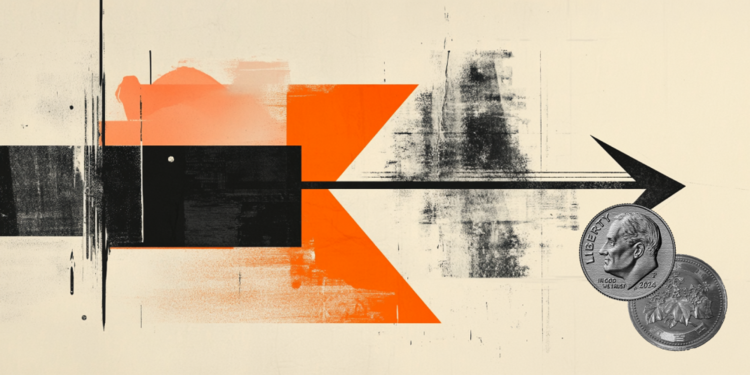While investors and companies are evaluating the possible uses – and business – of blockchain technology, an important debate has already emerged on the topic: the large consumption of electricity in mining the technology and the high carbon emission during the process.
According to Digiconomist, a platform dedicated to presenting the unintended consequences of technologies, the annual carbon footprint of bitcoin, for example, is one million tons – the equivalent of the Czech Republic’s annual emission, with around 10 million tons. population.
While the electricity consumed by bitcoin during the year is 204.50 twh (terawatt/hour), the same amount consumed by Thailand annually, which is home to a population of almost 70 million.
In this way, the concept of green blockchain, a possible solution to environmental issues related to technology.
The “green” network has two differences from the traditional blockchain model, the first being aimed at changing mining protocols, from proof-of-work to proof-of-stake.
in the model proof-of-work, or PoW (proof of work, in Portuguese), computers used for mining compete with each other to find the keys that validate a node. In this way, a lot of energy is spent by miners so that, in the end, only one is rewarded for the effort.
With the move to the proof-of-stake, or PoS (proof of participation, in Portuguese), the system passes to the blocks built, not mined. To choose miners, there is no competition, but a lottery, in which a person is chosen to discover the code. That is, only the electrical energy of a miner is spent in the validation process.
“In the end, green blockchain is just a concept or a nickname given to blockchains whose consensus algorithm is not proof of work”, says Tatiana Revoredo, professor at Insper (Instituto de Ensino e Pesquisa).
The other change from the “green” model is the same applied to any business that wants to mitigate its emissions: the use of renewable energy in the mining process, “such as wind or solar energy plate farms”, says Eduardo Ferreira, professor at Mackenzie Presbiterian University.
How blockchain mining works
The blockchain is made up of pieces of code (the blocks), which are linked together. And it is in these blocks that information, such as cryptocurrency transaction data, is recorded.
Alan de Genaro, a professor at Fundação Getúlio Vargas (FGV), explains that the mining process involves “verifying whether the information presented in one of these blocks is true or not”. If it is true, the block is incorporated into the network and receives an encryption code.
“Miners are validators of information, because there is no regulatory entity that says that a person has x money in their account, or if they can transfer x money to another person”, says the professor.
Currently, the miner who successfully validates a transaction involving bitcoin receives, as a reward, 6.25 bitcoins.
Other energy consumption
Ferreira explains that it is possible to use renewable energy in the mining process, which partially reduces the market’s concern about energy consumption. However, he sees some problems for the implementation of this output.
“We can think of difficulties in the same way that we consider bringing hot water through renewable energy. It is necessary to install solar panels, for example, but the cost of the product is not affordable [para todos os mineradores]”, explains Ferreira.
If we consider that a panel costs around BRL 2,000, he claims that it takes an investment of around BRL 10,000 to build a structure necessary to be able to mine using solar energy.
However, he points out that it is still necessary to have year-round sun to compensate for the installation, “so I don’t think it’s something simple for people to put at home”.
ESG
When asked whether the green blockchain can be considered part of an ESG strategy, an acronym for defining environmental, social and corporate governance guidelines, professors differed in their responses.
Eduardo Ferreira, from Mackenzie, states that it is possible to consider ESG if “we think that the acronym is used for any mechanism that has some concern with energy consumption and carbon emissions”.
He also points out that the term does not presuppose that a company will end the total consumption of some type of resource, but that the natural resource will be replaced in some way.
Thus, for Ferreira, with the change from energy consumed to renewable energy and the change in the mining model, there will be a reduction in carbon emissions as a result.
Global energy-related carbon dioxide emissions rose by 6% in 2021 to 36.3 billion tonnes, their highest level ever, the International Energy Agency (IEA) said.
And energy consumption is by far the biggest source of greenhouse gas emissions, according to data from WRI’s ClimateWatch platform, which offers comprehensive emissions data for all countries.
On the other hand, the Insper teacher disagrees with Ferreira. Tatiana Revoredo believes that determining the green blockchain as an ESG, “is like saying that a car is green for the simple fact that some engine is more economical than another”.
Tatiana explains that the mining engine, or consensus algorithm, is just one component of blockchain technology, that is, it is not possible to define the entire system as ESG because only one element consumes less energy.
*With information from João Pedro Malar, from CNN Brasil Business
Source: CNN Brasil
I am Sophia william, author of World Stock Market. I have a degree in journalism from the University of Missouri and I have worked as a reporter for several news websites. I have a passion for writing and informing people about the latest news and events happening in the world. I strive to be accurate and unbiased in my reporting, and I hope to provide readers with valuable information that they can use to make informed decisions.







